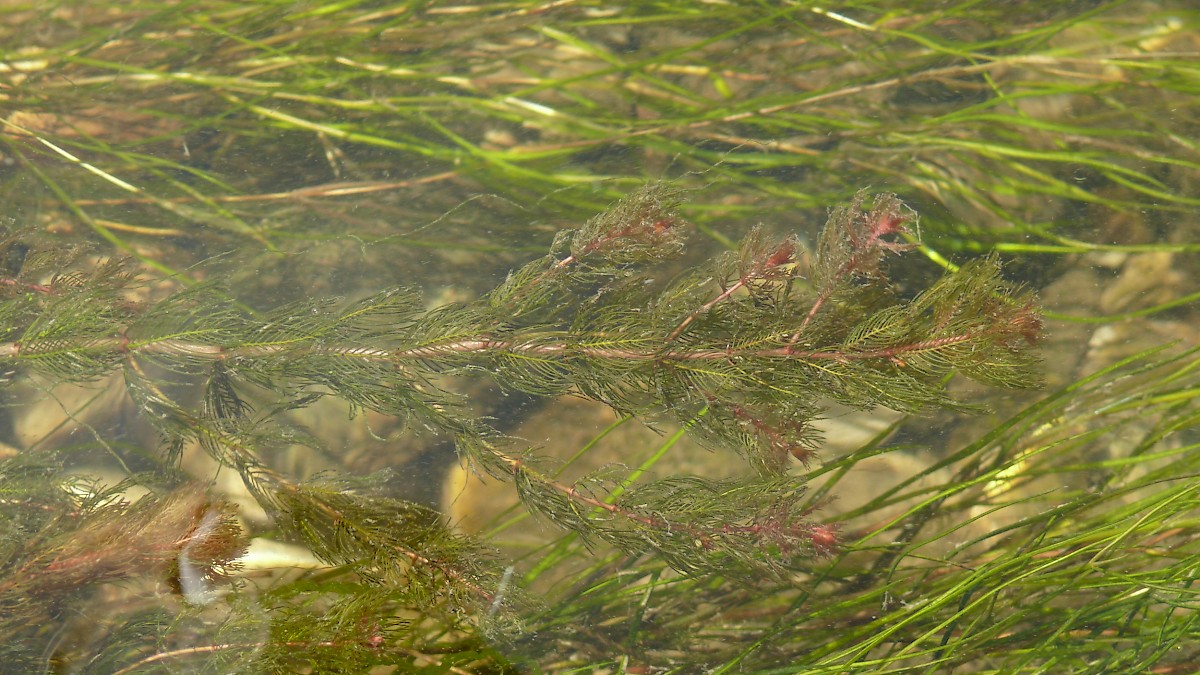EDRR Invasive Species
Eurasian Milfoil (Myriophyllum spicatum)

Photo: University of Florida
Define Invasive Species: must have all of the following –
- Is non-native to the area, in our case northwest Florida
- Introduced by humans, whether intentional or accidental
- Causing either an environmental or economic problem, possibly both
Define EDRR Species: Early Detection Rapid Response. These are species that are either –
- Not currently in the area, in our case the Six Rivers CISMA, but a potential threat
- In the area but in small numbers and could be eradicated
Native Range:
Eurasian milfoil is native to Eurasia and north Africa.
Introduction:
There are two records of its possible introduction.
- Introduced accidentally in ship ballast entering the Chesapeake Bay in the late 1800s.
- Intentionally introduced in the Chesapeake Bay area in 1942.
EDDMapS currently list 20,532 records of this plant. Most are along the U.S. Canadian border.
Within our region there are 24 records. 11 in Bainbridge GA, one in Panama City, four in Apalachicola, and seven in south Alabama.
There are five records within Six Rivers CISMA, all in the Mobile delta.
Description:
Eurasian milfoil is a submerged, rooted, freshwater plant preferring slow moving waters.
It has long slender stems that are reddish-brown to whiteish-pink in color branching as it reaches the surface. The leaves are olive-green in color, less than 2” in length, and branching (feather-like). Leaf whorls along the stem are between 3-6 leaves but typically 4. Whorl nodes are 3/8” apart.
Flowers are reddish and attached to emersed spikes reaching above the water. The spike is about 8” long and the flowers are arranged in a whorl pattern around this. In Canada it flowers in late July and early August.
It can tolerate salinities up to 10 ppt and could be found in upper brackish systems.
The plant can grow in 20 feet of water but is most often found in waters less than 10 feet deep.
It can grow into large, dense mats, and can be the most common plant in the area.
Issues and Impacts:
Has been known to stop boat traffic.
Can completely cover the surface of the water reducing oxygen exchange and light for other submerged plants. Decaying mats can reduce dissolved oxygen even further.
Has been reported to negatively impact fish and birds.
Management:
Mechanical harvesters and chopping machines have been used but fragments can re-sprout.
Underwater vacuuming has been tried in Canada.
In bodies of water where this can be done, water draw down has been effective.
Biological controls using fish and insects have had some success.
Aquatic herbicides have been used to help control but rarely eradicate the plant completely.
EDUCATE BOATERS TO CHECK THEIR BOATS AND TRAILERS WHEN ENTERING AND LEAVING WATER BODIES WHERE EURASIAN MILFOIL MIGHT EXIST.
DO NOT DISCHARGE UNWANTED AQUARIUM PLANTS INTO LOCAL WATERWAYS.
It is currently not listed as a federal noxious weed and continues to be sold as a plant for aquariums.
For more information on this EDRR species, contact your local extension office.
References
Eurasian milfoil, University of Florida IFAS Center for Aquatic and Invasive Plants
https://plants-archive.ifas.ufl.edu/plant-directory/myriophyllum-spicatum/
Early Detection and Distribution Mapping System (EDDMapS)
Six Rivers CISMA
https://www.floridainvasives.org/sixrivers/
 0
0
